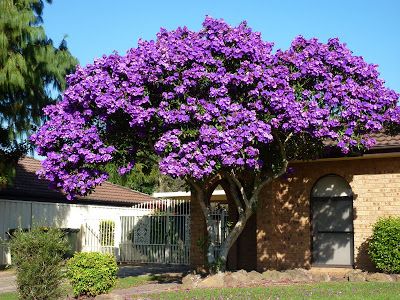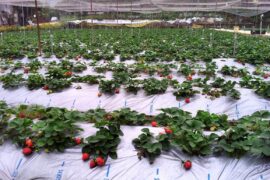Welcome to the Enchanting World of Sydney’s Purple Flower Trees!
Hey there, wonderful parents of Sydney! Are you looking to spice up your outdoor adventures with a sprinkle of floral magic? Or perhaps, you’re on the hunt for an educational yet fun excursion to delight your little ones? If that’s the case, you’re in for a treat! Sydney isn’t just famous for its iconic Opera House or the majestic Harbour Bridge; it’s also a hub for some of the most spectacular purple flower trees that will take your breath away.
Whether you’re a Sydney resident or planning a visit with your family, knowing about these botanical treasures can turn an ordinary walk in the park into a fascinating educational journey. So, strap on your walking shoes, grab a magnifying glass (kids love them!), and prepare to be amazed by the natural wonders right here in the heart of Sydney!
Why Purple Flower Trees?
Aside from the fact that they’re absolutely stunning, purple flower trees can be an incredible way to inspire a love for nature in your children. There’s something about that vibrant burst of purple that sparks curiosity and excitement. And the best part? You’ll find that these trees aren’t just a feast for the eyes, but they also attract a variety of birds and insects, creating a perfect teaching moment about ecosystems and biodiversity.
A Jacaranda Journey Like No Other
Let’s embark on our purple journey with one of Sydney’s most famous floral icons – the Jacaranda tree (Jacaranda mimosifolia). These trees are truly a sight to behold when they bloom in a sea of purple every spring. Sydney’s streets and parks are transformed into lavender dreamscapes, particularly in October and November.
Plan a family day out to one of the best spots to view these beauties, such as the Royal Botanic Garden Sydney, Kirribilli, or the University of Sydney campus. Encourage your kids to capture the beauty through drawing, photography, or even pressing a fallen flower in a book as a keepsake!
Botanical Fun Fact
Did you know that Jacaranda trees are actually native to South America? Thus, these trees are a testament to Sydney’s multicultural plant life. The history and journey of Jacaranda trees can be a wonderful talking point with your kids about the importance of diversity and adaptability.
Lavender Lace – The Chaste Tree
Another spectacular specimen is the Chaste Tree (Vitex agnus-castus), also known for its aromatic and purple-hued flowers. While it’s lesser-known than the Jacaranda, the Chaste Tree will delight families with its delicate lace-like blooms and herbal history. Often found in suburban gardens, this tree has a rich background in natural medicine – but remember, it’s for looking, not touching (or ingesting) on your family walks!
These trees are also drought resistant, which makes them a perfect subject when discussing the importance of sustainable gardening with the kiddos. You see, every tree has a story and a lesson to tell!
Preparing for Your Purple Flower Tree Adventure
Before you head out on your purple flower tree exploration, here are a few tips to make the trip super enjoyable:
- Seasonal Timing is Key: While planning your trip, keep in mind that the best time to see these trees in full bloom is during spring in Sydney. Mark your calendars for that perfect purple display!
- Educational Materials: Pack a guidebook on local flora, or download a plant identification app on your phone. These resources are fantastic for instant information and they turn each sighting into a learning opportunity.
- Snack It Up: Never underestimate the power of snacks. A little picnic under a purple canopy can make for an unforgettable memory.
- Camera Ready: Charge your phones and cameras. You’ll want to capture the smiles, the flowers, and the family fun to reminisce about later.
Ready to plan your visit? Stay tuned for more tips in our upcoming entries. Remember, purple flower trees in Sydney aren’t just beautiful – they’re gateways to fun family times and blossoming curiosity in the young and young at heart.
Embrace the enchanting experiences awaiting you and your family amongst the majestic purple flower trees of Sydney. Let’s make memories that both you and the kiddos will cherish forever!

5 Must-Know Tips for Parents Preparing to Explore Sydney’s Purple Flower Trees
Exploring nature’s purples can be enchanting, especially when shared with your kids. To ensure your outing is as smooth as a lavender petal, it’s important to be well-prepared. Here are five must-know tips for all parents before setting off to explore Sydney’s purple flower tree displays:
1. Dress for the Occasion
Dress Smartly: When you’re planning a tree-viewing day, check the weather forecast and dress your family accordingly. Comfortable footwear is a must when you’re going to walk around parks and streets lined with these purple beauties. Think layers – a breathable tee with a jumper or jacket that can go on or off as the temperature dictates.
2. Plan Your Route Wisely
Choose Accessible Locations: With little ones in tow, you want to make sure that your chosen spots are not only beautiful but also accessible. Opt for locales that are easy to reach with prams if necessary, and have restroom facilities close by. Some areas, like the Sydney’s Botanic Garden, are not only stroller-friendly, but also provide an opportunity for other educational experiences.
3. Engage with Interactive Learning
Scavenger Hunt: Turn the excursion into a playful learning experience with a scavenger hunt or a game of I-spy. Before leaving, make a list of items for your children to find, such as a specific bird or insect that is drawn to the purple flowers. It’s interactive, educational, and keeps those little feet excited to explore.
4. Safety First
Sun Protection: In Sydney’s sunny climes, protecting your brood from harmful UV rays is crucial. Lather on the sunscreen, don floppy hats, and have sunglasses at the ready. Even on cloudy days, UV can be high, so don’t skip on the sun protection.
Hydration Stations: Always carry water bottles to keep the family hydrated. The excitement of a day out can make kids forget to drink water, and we don’t want any dehydration dampening the day.
5. Create Lasting Memories
Memory Box Project: One of the joys of such an adventure is the memories you create. Encourage your children to pick up safe, fallen natural materials, like twigs or fallen petals (but be mindful of regulations in certain parks), and when you get home, put them in a ‘memory box.’ Over time, this box will grow with recollections from different family outings.
Where to Find Sydney’s Purple Flower Trees
Now that you’re equipped with the parent’s toolkit for a flawless floral outing, let’s pinpoint the spots where you can find these purple wonders. Start at the Royal Botanic Garden Sydney, wander through the shade of these flowering trees at Observatory Hill Park, or amble along the suburban streets of Kirribilli where Jacaranda canopies create a mesmerizing tunnel of blooms.
Remember, your local council may also host guided tree walks or community gardens featuring purple flower trees – these events can be a great way to connect with fellow nature-loving families.
Getting There and Back
Next, consider how you’ll get to your tree-gazing destinations. Public transport is often a fun adventure for kids, but if you’re driving, research parking options ahead of time. And if you prefer two wheels, make sure the bike paths are safe and accessible.
Wherever your purple flower tree adventure takes you, patience and preparation will make it a breezy and beautiful day out. Keep an eye out for our next entry, where we will dive into the individual stories of Sydney’s purple flower trees, additional kid-friendly activities, and eco-conscious practices that families can adopt.
So let the magic of nature inspire your family outings, and discover together the gorgeous canvas of purple that Sydney lays out for all to enjoy. The city is waiting for you with open arms and blooms aplenty!
For more great articles please see here. For more information see here
Disclaimer
The articles available via our website provide general information only and we strongly urge readers to exercise caution and conduct their own thorough research and fact-checking. The information presented should not be taken as absolute truth, and, to the maximum extent permitted by law, we will not be held liable for any inaccuracies or errors in the content. It is essential for individuals to independently verify and validate the information before making any decisions or taking any actions based on the articles.




